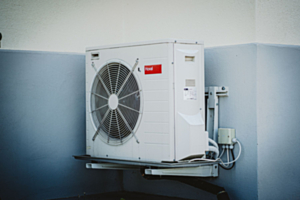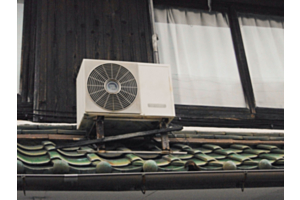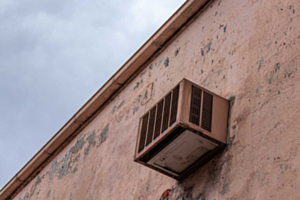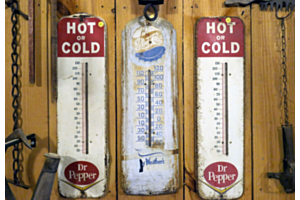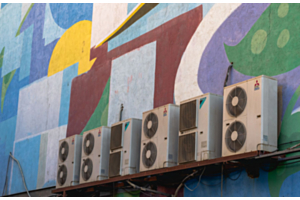How Is VRF Calculated?

An air conditioning unit like a ductless mini split system has a variable refrigerant flow or VRF. The criteria for a unit to be a VRF is having several indoor air-handling units and one outdoor condenser or compressor. In VRF systems they call it diversity factor. That means that if you have a 10 ton condenser unit with 13 indoor units each 1 ton, then your diversity factor is 130%. That means that you have 30% more capacity in evaporation than condensation. VRF systems can use water cooling or include a three-piped heat recovery system or a two-piped heat pump.
No matter the VRF system, understanding your refrigerant flow allows you to gauge how effectively your air conditioner or heater uses the refrigerant that travels to the evaporators in each indoor air-handling unit. The better the VRF, the more control you have over each cooling zone, allowing you to set your home or commercial building to the ideal temperature you like.
How do you know if your air conditioner is using refrigerant effectively? In VRF what you need to calculate as in any other system is the heat/cool load you need to comply with. After you have this, you need to understand the demand of the areas, schedule of the areas. This way you would know what the total demand for every hour of the day for certain areas would be.
The more data you have available to inform your VRF efficiency, the better. First, you need to know your air conditioner’s standard rating cooling capacity in British thermal units (BTUs) an hour, which can also be converted to watts.
You should also figure out the AC’s energy efficiency ratio or EER. This tells you how well your air conditioner uses the energy required for it to run and cool your home. EER is also represented as a wattage in this instance. (As an FYI, the seasonal energy efficiency ratio or SEER is an average of how much energy is used to produce a certain amount of BTU along the whole year. ).
EER shows the efficiency of a system at peak load capacity. This is super useful, but reality is that peak demands only make about 2% of the time along a whole day. Another metric you can calculate is IEER, which uses the EER of a system at 100%, then at 75%, then at 50% and finally at 25% and then shows you an number that represents more of an average depending on the load it works on.
So let’s say you have a VRF multi-split AC like a ductless mini split system. The unit operates at about 19,000 watts, which is roughly 65,000 BTU an hour. By converting the standard cooling capacity to watts, then taking your EER and multiplying that by wattage per hour, and finally calculating the IEER, you get your refrigerant flow efficiency.
Keep in mind that your home or commercial building’s cooling load can be affected by different factors throughout the year and on any given day. For example, for each person you add to the building, they’ll produce heat. When relaxing or doing light work, people generate heat at about 230 BTU an hour. If engaging in strenuous physical activity, it’s up to 635 BTU an hour.
Lights, both artificial and natural, also affect cooling load. A single-watt light source is 3.41 BTUs, so take that number and calculate it by however many watts each light in your home produces. For instance, if you have a 200-watt light, that light alone contributes 682 BTU an hour.
Other factors like how much equipment you have in your home that’s plugged in and on must also be factored in, as should solar load, which can through conductance be generated by glass and other surfaces.
The more sources of light and heat, the harder your air conditioner has to work to provide cooling, so knowing your cooling load paints a more complete picture of VRF efficiency.
Sources:
https://vrfwizard.com/calculating-cooling-load/


